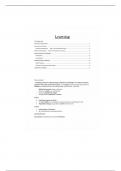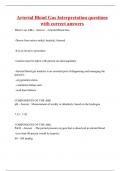Class notes
Psy 1004F; Psychology of learning Notes
- Course
- Institution
This is a comprehensive and detailed note that Covers theoretical perspectives on learning, classical and operant conditioning, non-associating learning, observational learning, and cognitive learning.
[Show more]




